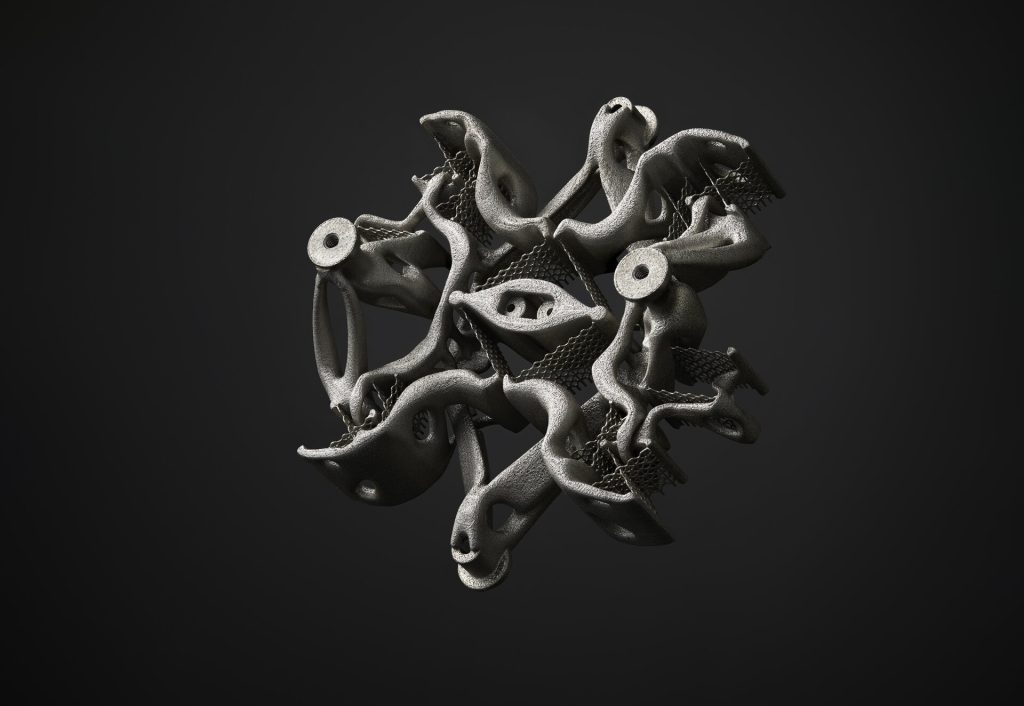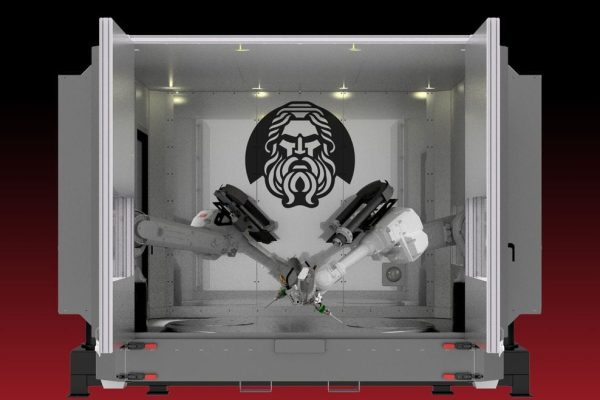Nominations are now open for the 3D Printing Industry Awards 2023. Who are the leaders in 3D printing? Find out on November 30th when the winners across twenty categories will be announced during a London-based live awards ceremony.
The Swiss Center for Electronics and Microtechnology (CSEM) has collaborated with metal 3D printing specialists 3D Precision and Space and Naval SME Almatech SA to design, 3D print, and test a Compliant Rotation Reduction Mechanism (CRRM).
3D printed all-in-one in high performance stainless steel, the CRRM is a frictionless gear ‘compliant mechanism.’
The gear system is designed to enable the precise rotation of aerospace components such as thrusters, sensors, and telescope lenses or mirrors, without the need for lubrication. To achieve this, the CRRM employs bending, or ‘elastic deformation,’ and incorporates 24 bendable blades, 16 of which are interlocking.
The project, called “COMAM,” started in 2018 and was funded by the European Space Agency’s (ESA) General Support Technology Programme (GSTP). Designed by CSEM, the CRRM was 3D printed by 3D Precision, while the performance tests were carried out by Almatech SA.
“The deformable and rigid parts are built together as one single monolithic structure, avoiding any time-consuming assembly and alignment,” explained ESA Technical Officer Paolo Zaltron. “Their unusual shapes pushed the boundaries of Additive Manufacturing technologies and are the result of advanced optimization techniques that lead to unprecedented high flexibility and low mass.”

3D printing a frictionless gear
In space applications, the use of lubrication can lead to unwanted contamination of delicate systems and induces wear and tear which can reduce the overall operating life of the component. As such, frictionless mechanisms, which don’t require any lubrication, are particularly attractive.
Whilst compliant mechanisms are well known in space applications, often being employed where zero-friction motion is required, their design and production is challenging. This is because these mechanisms possess complex architecture, and are composed of various precise parts that, traditionally, are machined, verified, aligned and fixed together.
Additive manufacturing offers significant advantages in the production of these mechanisms, including design freedom and the possibility to produce complex monolithic shapes without any assembly requirements. Indeed, it is claimed that the CRRM’s integration of 24 flexure blades to form crossed pivots and eight intermediate stages would not be possible in such a small volume without the use of additive manufacturing. Moreover, thanks to the benefits of 3D printing, no alignment is needed between the flexure structures to ensure a proper cinematic.
To design the mechanism, the team combined parametric and topology optimizations. This combination is said to have significantly improved the mass and eigenfrequencies of the part, providing a first eigenmode of over 550 Hz. Ultimately, the CRRM allows for a rotary motion reduction with a factor of 10, especially useful for scanning, pointing, calibration or flip mirror mechanisms.
Although the overall results of this project are seen as “very encouraging,” the performance and lifetime test results suffered from the distortion of the two broadboard models manufactured and tested.
The full results from the testing process, and further information regarding the development and production of the CRRM, are available via the CEAS Space Journal.
3D printing aerospace components
Using additive manufacturing for the production of aerospace components is nothing new. Earlier this year it was announced that Australian heat transfer specialist Conflux Technology had partnered with Germany-based space rocket manufacturer Rocket Factory Augsburg (RFA) to embed its 3D printed Conflux heat exchanger technology into an orbital rocket.
The heat exchangers are produced using Conflux Technology’s Monel K 500 metal alloy material, and 3D printed using EOS’s M300-4 Direct Metal Laser Sintering (DMLS) technology. Developed as part of the Australian Space Agency’s Moon to Mars Initiative, the gas duct heat exchanger is set to be developed, manufactured and put through functional testing by the end of the year.
Similarly, it was recently announced that the Portland State Aerospace Society (PSAS) had leveraged 3D printing technology to successfully launch OreSat0, a CubeSat system, into low earth orbit. The 3D printed satellite’s critical subsystems were produced using CRP Technology’s Windform LX 3.0 composite material. Low-cost Fused Deposition Modeling (FDM) 3D printers were used for prototyping before the team transitioned to Selective Laser Sintering (SLS) with Windform LX 3.0 to 3D print the final parts.
OreSat0.5 is set to launch in October 2023, whilst OreSat1 is scheduled to deploy from the International Space Station (ISS) in early 2024.
Subscribe to the 3D Printing Industry newsletter to keep up to date with the latest 3D printing news. You can also follow us on Twitter, like our Facebook page, and subscribe to the 3D Printing Industry Youtube channel to access more exclusive content.
Are you interested in working in the additive manufacturing industry? Visit 3D Printing Jobs to view a selection of available roles and kickstart your career.
Featured image shows the 3D printed Compliant Rotation Reduction Mechanism. Image via the European Space Agency.
منبع: https://3dprintingindustry.com/news/european-space-agency-backs-3d-printed-frictionless-gear-project-224274/?utm_source=rss&utm_medium=rss&utm_campaign=european-space-agency-backs-3d-printed-frictionless-gear-project

